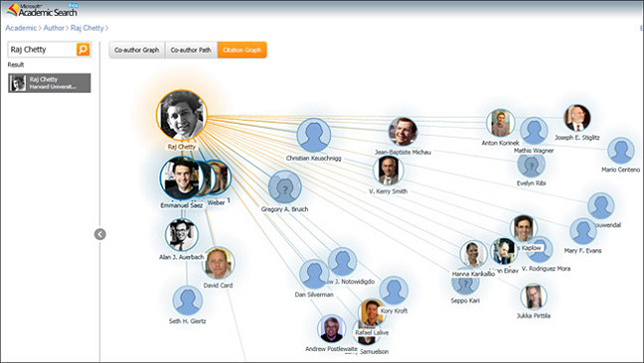Finding Relevant Data Gets Easier With New Microsoft Research Graph
Microsoft Research has released the Microsoft Academic Graph to help researchers quickly identify academic papers that are most relevant to their own work.

With six different variables available, Microsoft Academic Graph helps users quickly identify all the research papers written by authors who collaborated with certain other authors.
Researchers around the world have a new way to apply big data to their work. Microsoft Research has released the Microsoft Academic Graph (MAG), a way to quickly assess and evaluate research papers, studies and reports of all kinds.
Using the MAG, researchers can search through the 83 million research papers Microsoft Academic Service (MAS) has identified since 2008, using a number of variables to find the research that is most meaningful to them. The data is stored as a set of text files and each entity is classified in six ways: field of study, author, institution, paper, venue and event. For instance, if somebody were looking for research on a specific field of study and knew the authors he or she was interested in finding the work of, the researcher could use the MAG to identify the papers available on that topic by those authors.
Microsoft Research, the research division of Microsoft created in 1991, launched the MAS seven years ago and last year integrated it with its primary commercial search engine Bing. As a consequence, researchers can use Bing to search through academic domains to find the papers they are looking for. With the help of Bing's capacity to crawl the Web and generate structured information from unstructured text in papers, Microsoft officials said, the number of publications available via MAS has more than doubled and the number of links of citations more than tripled. The MAG provides a snapshot of that data, which can be downloaded or accessed via Microsoft's Azure cloud service.
"There has never been a release of bibliographic data at this scale," said University of Washington Information School professor Jevin West. "It will allow researchers to study the structure of scientific knowledge, build better algorithms for mapping and improving information retrieval."
Microsoft Research is encouraging MAG users to submit for the company's Azure for Research awards, which provide award recipients large allocations of space and computing resources on Microsoft Azure for up to a year.
As an example, Microsoft Research helped the Federal University of Minas Gerais, which has one of Brazil's most advanced computer science programs, study the impact of traffic jams on the country's biggest cities in hopes that it can reduce the economic toll. The prediction model created as a result has been tested in other cities like London, New York and Los Angeles with what Microsoft researchers say is 80 percent accuracy.
Likewise, researchers from the University of Texas were able to use Microsoft Azure to build a prototype for national flood data-modeling and mapping in hopes of providing life- and cost-saving information to the public on the threat of natural disasters.
Azure for Research awards are granted six times a year. The next deadline for proposals is Aug. 15.
About the Author
Michael Hart is a Los Angeles-based freelance writer and the former executive editor of THE Journal.